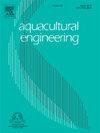Site selection for off-shore macroalgae aquaculture on the French Atlantic coast
IF 4.3
2区 农林科学
Q2 AGRICULTURAL ENGINEERING
引用次数: 0
Abstract
Macroalgal aquaculture production has significantly increased worldwide in recent decades. In Europe, seaweed aquaculture is not yet well established, necessitating strategic planning for its development. In this study, the suitability for the offshore cultivation of three macroalgae (Laminaria digitata, Saccharina latissima, and Palmaria palmata) along the French North Atlantic coast was determined with a Spatial Multi-Criteria Evaluation (SMCE) process based on a Geographical Information System (GIS) workflow. Variables influencing macroalgal growth, such as nutrient concentration, sea temperature, water transparency, sea current speed and wave height, were selected and tailored to the specific requirements of each species. Environmental data were obtained from satellite remote sensing and model outputs. In addition, other socio-economical activities conflicting with aquaculture space were included within the SMCE and integrated into a global suitability index. This study showed that large areas in the French North Atlantic coast are suitable for offshore seaweed aquaculture but not for all months of the year. The strongest constrictions to aquaculture of L. digitata, S. latissima and P. palmata were caused by wave height and current speed. Among the studied species, S. latissima showed the largest suitable area for development (up to 1847 km²), while P. palmata presented the smallest area with 461 km². The suitability index showed a seasonal pattern, with higher values between November and April and optimal conditions in December. A sensitivity analysis revealed that temperature and nitrate concentration changes significantly impacted the total suitability index. Further validation based on experimental growth assessment is a perspective the aquaculture sector considers.
法国大西洋沿岸近海大型藻类养殖选址
近几十年来,世界范围内的大型藻类养殖产量显著增加。在欧洲,海藻养殖尚未很好地建立起来,因此需要对其发展进行战略规划。以法国北大西洋沿岸为研究对象,采用基于地理信息系统(GIS)工作流的空间多准则评价(SMCE)方法,对三种大型藻类(带藻、糖藻和棕榈藻)的近海养殖适宜性进行了评价。根据每个物种的具体要求,选择并调整影响大藻生长的变量,如营养物质浓度、海水温度、海水透明度、海流速度和浪高。环境数据来自卫星遥感和模式输出。此外,与水产养殖空间相冲突的其他社会经济活动也被纳入SMCE,并纳入全球适宜性指数。这项研究表明,法国北大西洋沿岸的大片地区适合近海海藻养殖,但并非全年都适合。波浪高度和水流速度对马蹄莲(L. digitata)、马蹄莲(S. latatissima)和掌形马蹄莲(P. palmata)的养殖影响最大。其中,柽柳的适宜生长面积最大(1847 km²),棕榈的适宜生长面积最小(461 km²)。适宜性指数呈季节性分布,11 ~ 4月最高,12月最优。敏感性分析表明,温度和硝酸盐浓度的变化对总适宜性指数有显著影响。水产养殖部门考虑在实验生长评估的基础上进一步验证。
本文章由计算机程序翻译,如有差异,请以英文原文为准。
求助全文
约1分钟内获得全文
求助全文
来源期刊

Aquacultural Engineering
农林科学-农业工程
CiteScore
8.60
自引率
10.00%
发文量
63
审稿时长
>24 weeks
期刊介绍:
Aquacultural Engineering is concerned with the design and development of effective aquacultural systems for marine and freshwater facilities. The journal aims to apply the knowledge gained from basic research which potentially can be translated into commercial operations.
Problems of scale-up and application of research data involve many parameters, both physical and biological, making it difficult to anticipate the interaction between the unit processes and the cultured animals. Aquacultural Engineering aims to develop this bioengineering interface for aquaculture and welcomes contributions in the following areas:
– Engineering and design of aquaculture facilities
– Engineering-based research studies
– Construction experience and techniques
– In-service experience, commissioning, operation
– Materials selection and their uses
– Quantification of biological data and constraints
 求助内容:
求助内容: 应助结果提醒方式:
应助结果提醒方式:


